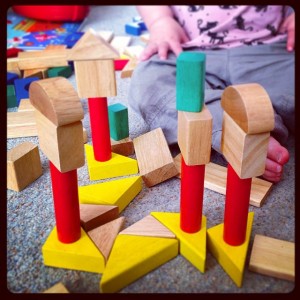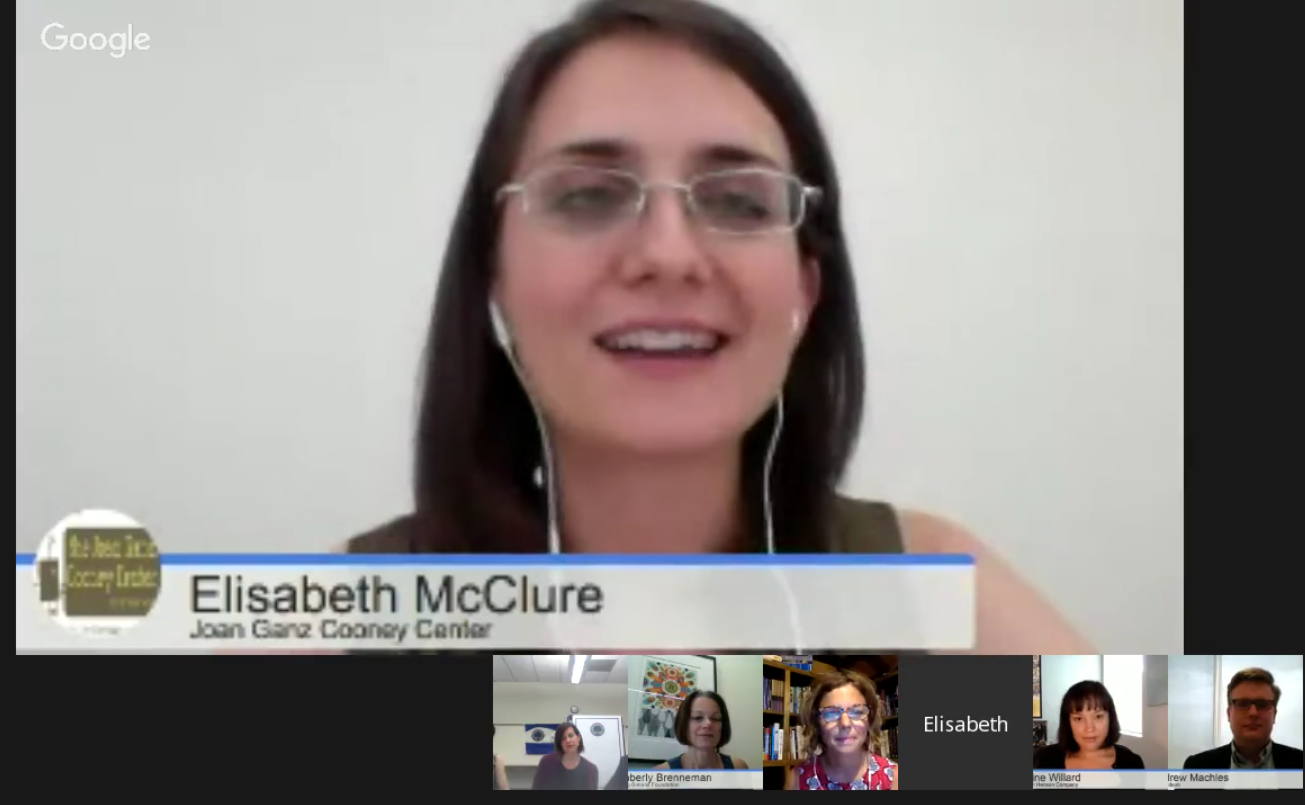
Picture this: You enter a preschool classroom and hear the splashes and giggles of children around a water table. You approach an elementary school and see a small group of children on a guided nature walk, investigating the blossoms on a flowering tree, while another group is measuring the dimensions of a jungle gym and creating drawings of how it is constructed. All around you, early learners are engaged in science, technology, engineering, and math (STEM) — subjects that were once seen as too “hard” to teach young children but which are now recognized as critical to weave into their growing understanding of the world.
Research on the early childhood years (birth through age 8) has spotlighted how children’s environments and interactions with adults become catalysts for children’s growth and development. This has prompted questions among policymakers, practitioners, and researchers on how to ensure those years are filled with opportunities for all children to explore, investigate, and see themselves as learners. It is even more critical to provide vibrant learning environments for children from underserved communities and in vulnerable families. What needs to change to ensure that richer learning experiences are provided in today’s child care settings, pre-K centers, and elementary schools? How can researchers, policy makers, and practitioners work together to ensure that all young children have access to high-quality instruction and learning environments?
So begins the background paper on STEM and early learning that I had the honor of co-authoring with Lisa Guernsey, Doug Clements, and the Frameworks Institute. These two paragraphs represent so well what I’ve had the opportunity to learn over the course of working on this project: Young children can and should experience joyful, contextualized, and developmentally-appropriate STEM lessons; early childhood teachers, similarly, need joyful, contextualized, and developmentally-informed STEM education in their own pre- and in-service training in order to support their students effectively; and researchers, policy makers, and educators must collaborate to bring this vision to reality.
How do we get a movement of this kind off the ground? Back in April, I had the honor of attending the White House Early STEM Learning Symposium, where participants discussed the incredible power of STEM learning in early childhood and made individual commitments, led by the Obama administration, to support this powerful area of opportunity. The symposium inspired great energy and a motivation among attendees to take action.
That’s why, on May 31 and June 1, the Joan Ganz Cooney Center and New America convened leaders from research, policy, philanthropy, and practice, to follow up on the White House symposium and create a national action agenda for early STEM learning. Participants arrived well-prepared, having read a background paper—referenced above and prepared specially for the event—which reviewed the research on STEM and early learning; the state of the early childhood workforce with respect to STEM teaching; policy issues; an analysis of major research funding in the area; and an important set of recommendations from the Frameworks Institute on how to effectively communicate about early STEM to the public.

Photo: New America
The convening, funded by the National Science Foundation and hosted beautifully at New America, was a two-day event featuring moving and informative talks from celebrated experts and leaders—including Deborah Phillips of Georgetown University, Joan Ferrini-Mundy of the National Science Foundation, and Nat Kendall-Taylor of the Frameworks Institute—as well as a presentation by two top members of the Obama administration, Russell Shilling and Libby Doggett, who discussed their agenda following the April White House event. The event also included several hours devoted to breakout discussions. The participants’ task: To bring their diverse experience and expertise to the table to help address some of the major barriers preventing high quality STEM education from being effectively implemented in early childhood classrooms. We also asked participants to make suggestions for research funding organizations to help create a new research and development agenda over the coming years.

Photo: New America
Attendees had the choice of six discussion groups, and after discussing their topics for an hour, they reported back to the whole group for a priority-setting session. Their insights included:
- We must think of STEM learning across the early childhood years as a continuum, and reduce the degree to which research, practice, and policy tend to divide up infancy/toddlerhood, pre-K, and K-3 children into siloed areas of study, standards, and curricula.
- We must consider the importance of teacher working conditions and student diversity to this issue, and all issues related to early childhood education.
- We must include home-based care in our consideration of early childhood STEM education.
- We must include informal learning environments, like libraries and museums, in our strategy to bring early STEM learning to all young children.
- Teachers and school administrators need to be involved collaborators in the design phase of studies in order to produce research that is applicable and scalable in the real world.
- We must consider the child’s and the teacher’s encompassing ecologies more holistically in order to be effective. We must involve parents and families, school administrators, and other members of the community from the beginning, hearing their voices and needs, to make important changes stick.
- Researchers must make a greater effort to disseminate their findings where teachers are already looking for information. This includes practice journals and websites like Pinterest.
This is just one small sample of the wonderful recommendations made by the remarkable attendees. We also welcome comments and ideas from you all, our readers: What priorities we should be considering? What do you think are the barriers to bring STEM learning to young children? Please send your thoughts to cooney.center@sesame.org.
So what’s next? With this feedback in hand, we will revise the background paper into a major report—which will include a national action agenda and a formal set of recommendations for funding agencies – to be released and widely disseminated in the fall. With the support of the truly extraordinary attendees at our event, as well as the building momentum and interest in early STEM learning in the policy arena (following on the heels of the White House event and our own convening, there was also a Congressional briefing on this topic on June 10) we are very optimistic that our efforts will indeed help foster STEM trajectories for America’s youngest citizens.
To learn more about this event, please see Deepening Discussion of STEM for Young Learners, Part 1 by Kristina Rodriguez.



